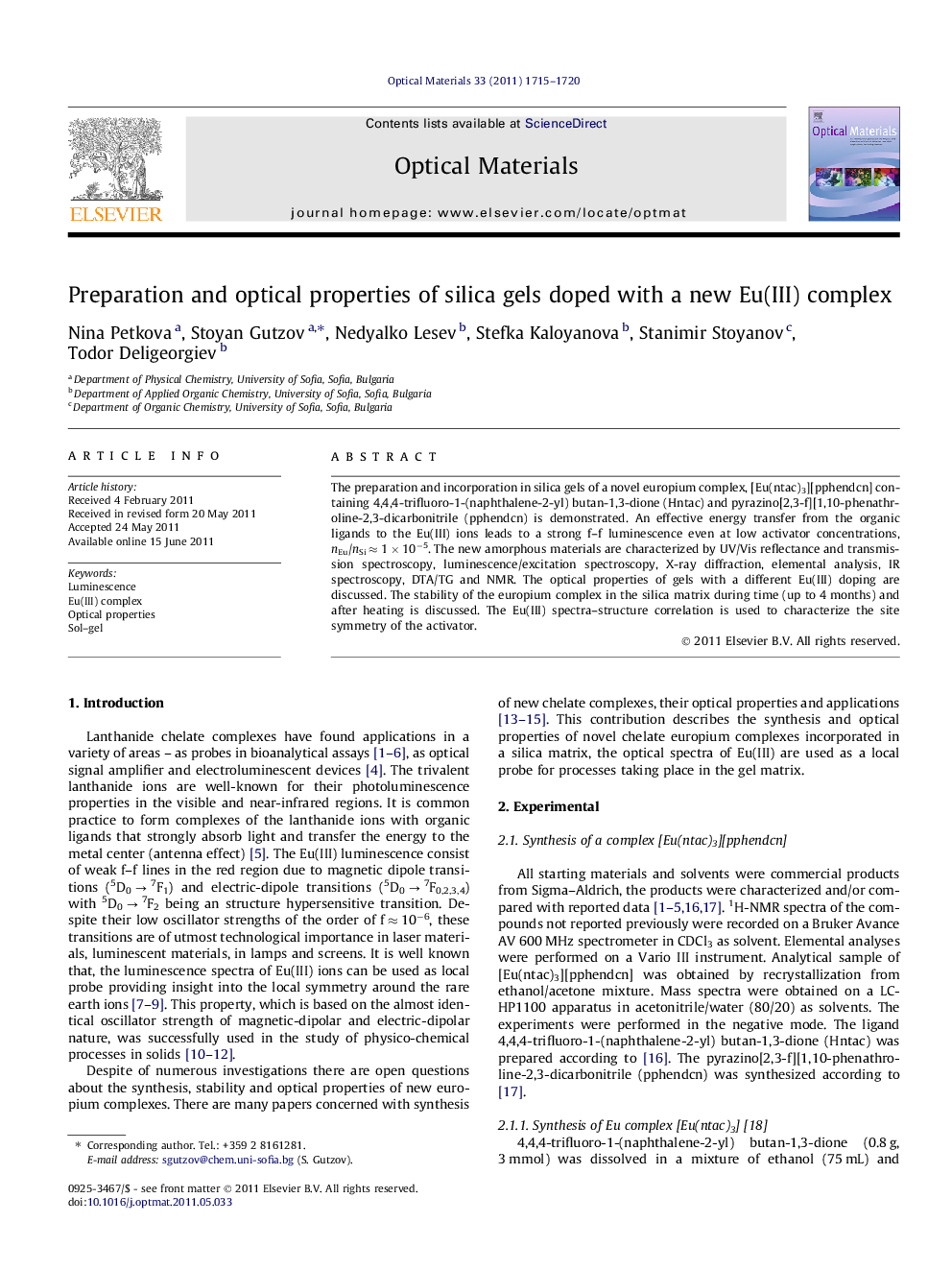| Article ID | Journal | Published Year | Pages | File Type |
|---|---|---|---|---|
| 1495306 | Optical Materials | 2011 | 6 Pages |
The preparation and incorporation in silica gels of a novel europium complex, [Eu(ntac)3][pphendcn] containing 4,4,4-trifluoro-1-(naphthalene-2-yl) butan-1,3-dione (Hntac) and pyrazino[2,3-f][1,10-phenathroline-2,3-dicarbonitrile (pphendcn) is demonstrated. An effective energy transfer from the organic ligands to the Eu(III) ions leads to a strong f–f luminescence even at low activator concentrations, nEu/nSi ≈ 1 × 10−5. The new amorphous materials are characterized by UV/Vis reflectance and transmission spectroscopy, luminescence/excitation spectroscopy, X-ray diffraction, elemental analysis, IR spectroscopy, DTA/TG and NMR. The optical properties of gels with a different Eu(III) doping are discussed. The stability of the europium complex in the silica matrix during time (up to 4 months) and after heating is discussed. The Eu(III) spectra–structure correlation is used to characterize the site symmetry of the activator.
Graphical abstractThe preparation and incorporation in silica gels of a novel europium complex, [Eu(ntac)3][pphendcn] containing 4,4,4- trifluoro-1-(naphthalene-2-yl) butan-1,3-dione (Hntac) and pyrazino[2,3-f][1,10-phenathroline-2,3-dicarbonitrile (pphendcn) is demonstrated. An effective energy transfer from the organic ligands to the Eu(III) ions leads to a strong f-f luminescence even at low activator concentrations, nEu/nSi≈1·10-5. The site symmetry of the Eu(III) ion in the new complex and is C2 or lower which allows a high luminescence intensity.Figure optionsDownload full-size imageDownload high-quality image (58 K)Download as PowerPoint slideHighlights► The synthesis of a novel [Eu(ntac)3][pphendcn] complex with a quantum efficiency ≈35% and the preparation of SiO2:[Eu(ntac)3][pphendcn] gels is demonstrated. ► The sol-gel materials display a strong red Eu(III) luminescence even at low doping due to an energy transfer. ► The site symmetry of the Eu(III) ion is C2 or lower. ► An additional blue emission at 400 nm appears in the doped gels, most probable coming from decomposition of the Eu(III) complex during time in the silica matrix.
